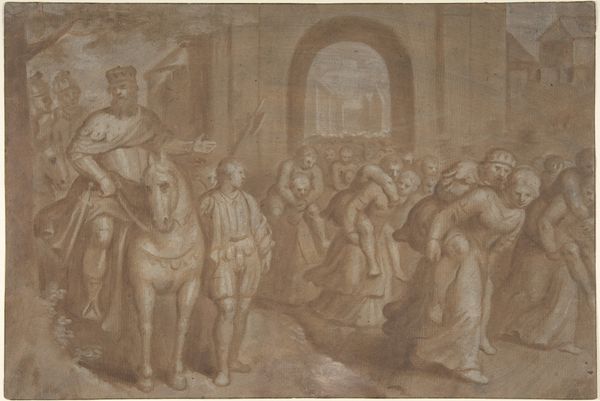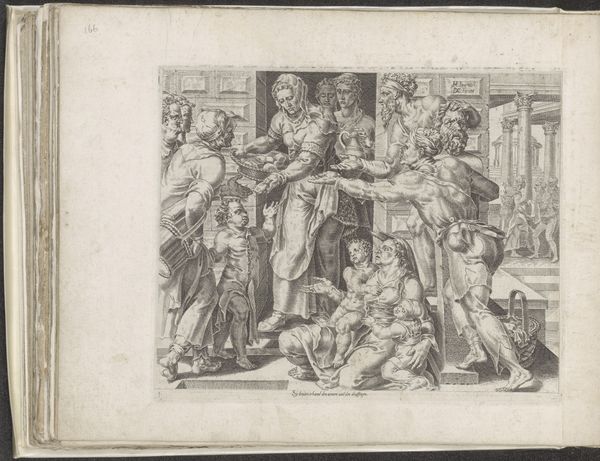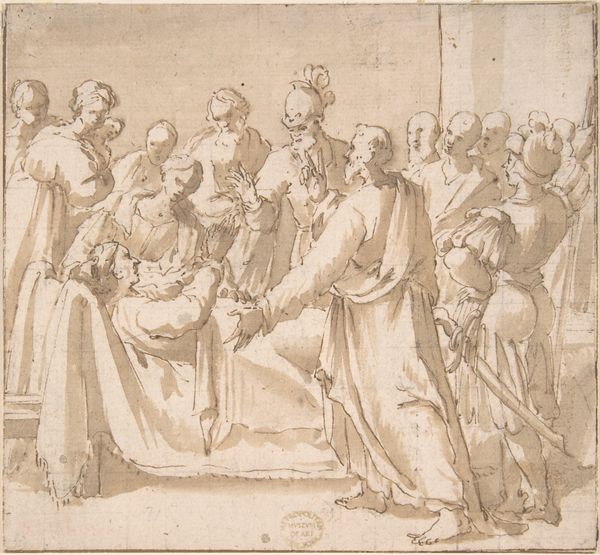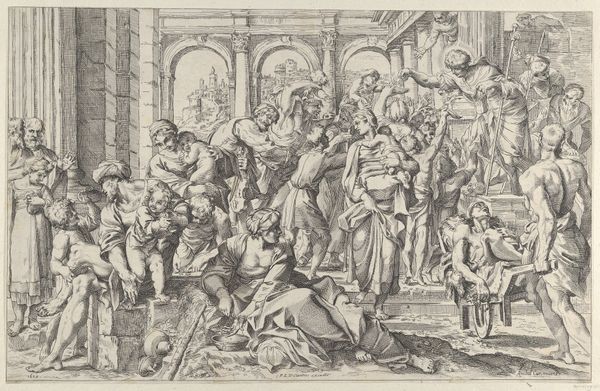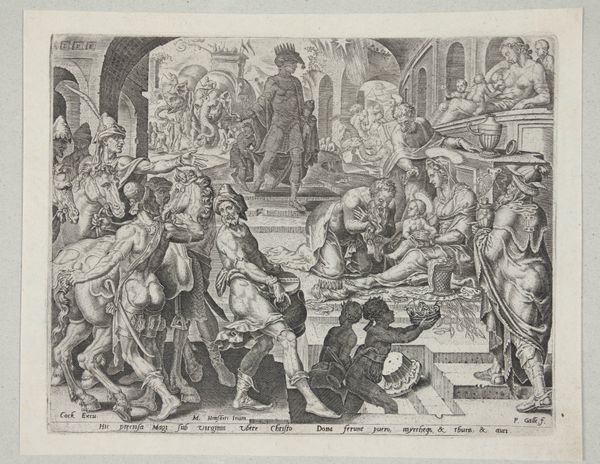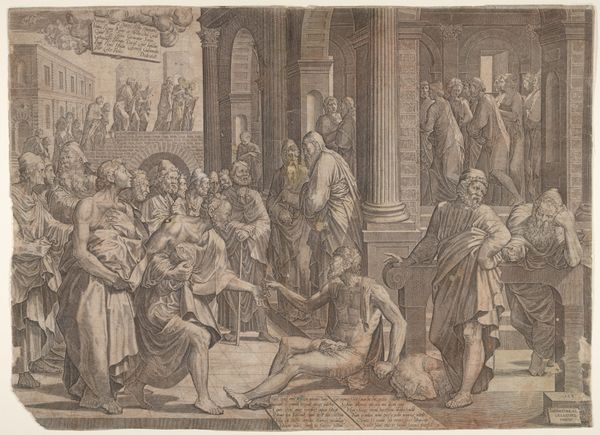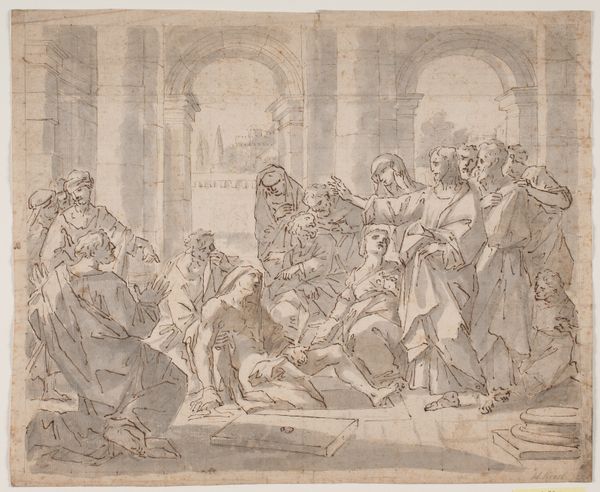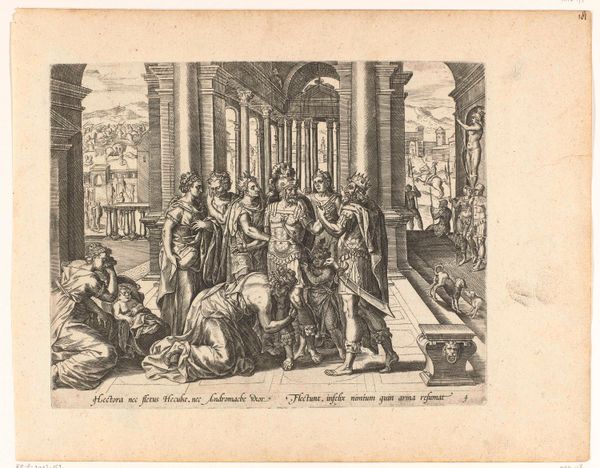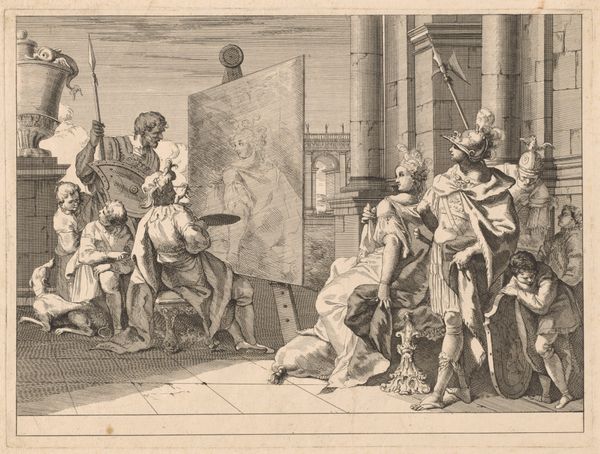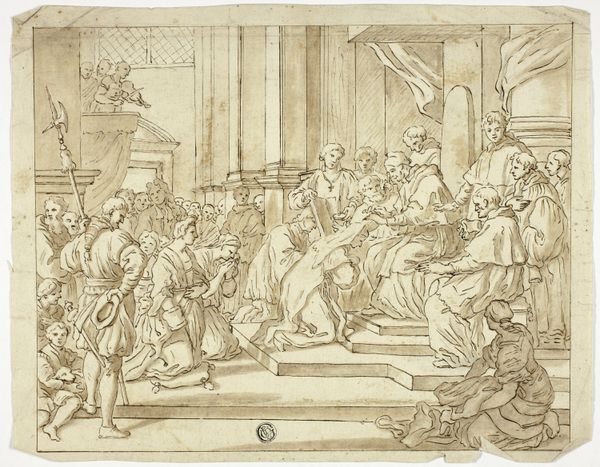
Christ Washing the Feet of his Disciples 1540 - 1545
0:00
0:00
drawing, print, ink, engraving
#
drawing
#
ink drawing
# print
#
figuration
#
ink
#
history-painting
#
italian-renaissance
#
engraving
#
christ
Dimensions: Sheet (trimmed): 13 3/8 × 19 3/16 in. (34 × 48.8 cm)
Copyright: Public Domain
Curator: What grabs me first about this image is its overall silvery tone, like moonlight diffused through old glass. Editor: It is, indeed, a scene cast in a reflective light, and appropriately so, considering we’re looking at Antonio Fantuzzi's "Christ Washing the Feet of his Disciples." This print, an engraving actually, dates from around 1540-1545 and is now housed at the Metropolitan Museum of Art. Curator: Fantuzzi’s got this incredible skill for making an intimate moment feel both epic and strangely melancholic. Is it the humility, do you think, that’s catching me here? Christ, kneeling… Editor: I think it is the inversion of power that strikes me. In a patriarchal society like 16th-century Italy—and even more so concerning divine right—the act of washing feet becomes profoundly revolutionary. The texture created with these densely hatched lines speaks to both physical labor and spiritual servitude. It’s a visceral portrayal of a God who chooses vulnerability over dominance. Curator: And that table groaning under the weight of, what is that, the Passover Seder? You know, the details, down to each expression, almost force us to consider the story’s continued relevance, it feels very *now*, in its way. Editor: Absolutely, and remember, the Renaissance was a period deeply invested in humanist ideals. Fantuzzi uses the conventions of history painting to insert these conversations about human relationships into religious narratives. The drawing is almost teeming with this emotional weight. Look at the disciple recoiling, the tension, the awareness. Curator: There's a ripple effect through the image, each figure processing Christ’s action in their own way, some with resentment, others with profound understanding… It’s beautifully awkward. I find that terribly moving, this messy tableau. Editor: Indeed, it’s in this awkward space of humanity that we confront the implications of this act, even centuries later. By choosing the act of service, Christ destabilizes social hierarchies. Fantuzzi visualizes a world in which divine authority is intertwined with radical inclusivity. Curator: Thanks to Fantuzzi's rendering, the act is far more profound, no? Editor: Most definitely, and through him we can understand art history as both reflection and powerful invitation into different worlds.
Comments
No comments
Be the first to comment and join the conversation on the ultimate creative platform.
